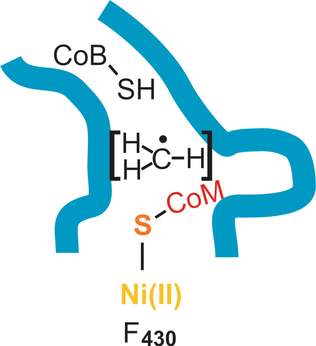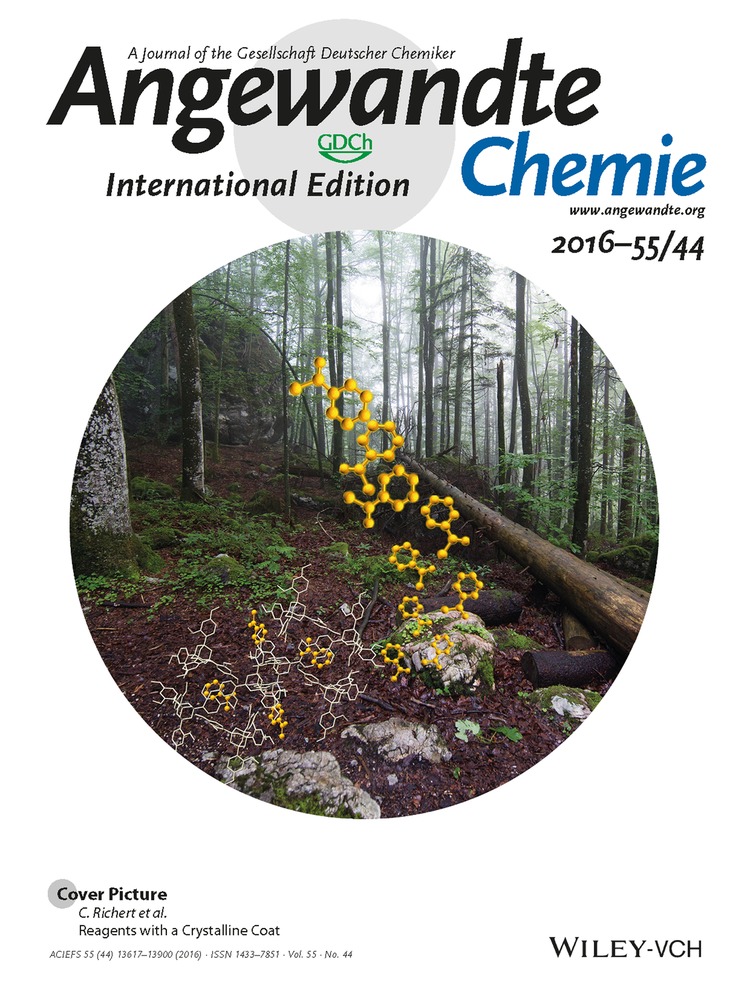The Biological Methane-Forming Reaction: Mechanism Confirmed Through Spectroscopic Characterization of a Key Intermediate
Graphical Abstract
Find your path: Methyl-coenzyme M reductase (MCR, turquoise) reversibly catalyzes the reduction of methyl-coenzyme M (methyl-S-CoM) with coenzyme B (CoB-SH) to form methane and the heterodisulfide. Recently, spectroscopic methods were used to detect trapped intermediates in a stopped-flow system, and CoM-S-NiII was identified after half a turnover of the MCR reaction (F430=nickel porphinoid). This finding supports a methyl-radical catalytic mechanism.





